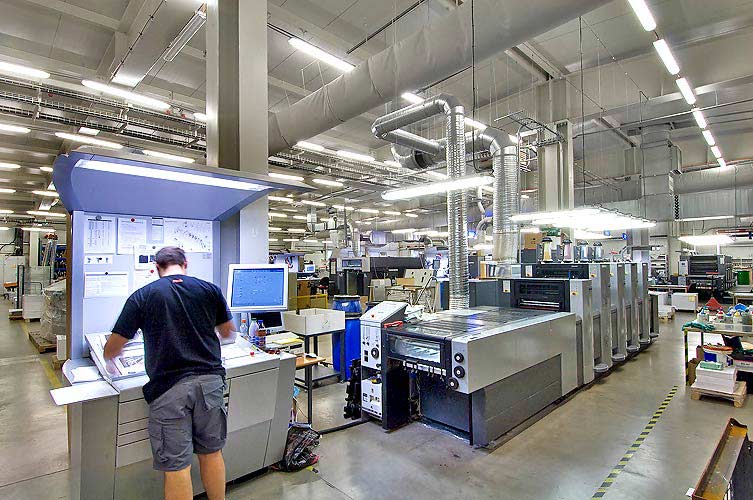The world of publishing has been transformed by numerous technological advances over the years, but few have been as impactful as offset printing. This revolutionary method of printing not only improved the efficiency and quality of printed materials but also democratized the publishing industry, making it accessible to a broader audience. Understanding how offset printing changed publishing is essential for anyone interested in the evolution of media and communication.

The Genesis of Offset Printing
Offset printing originated in the early 20th century, stemming from the need for a more efficient printing process. Prior methods, like letterpress, were labor-intensive and time-consuming. Offset printing introduced a new way of transferring ink from a plate to a rubber blanket and then onto the printing surface, significantly speeding up the process. This innovation allowed for faster production times and reduced costs.
Revolutionizing the Publishing Industry
Before the advent of offset printing, publishing was a privilege reserved for those who could afford the high costs associated with traditional printing methods. Offset printing changed this dynamic by lowering production costs, enabling more individuals and organizations to publish their works. Books, magazines, and newspapers became more widely available, and the publishing industry flourished.
Increased Print Quality and Consistency
One of the most notable impacts of offset printing was the improvement in print quality. The method allowed for more precise color reproduction and sharper images compared to earlier techniques. This consistency in quality was essential for publishers who wanted to maintain a professional appearance across their printed materials.
Cost-Effectiveness and Accessibility
The cost-effectiveness of offset printing was a game-changer for the publishing industry. It made mass production more feasible, allowing publishers to print larger quantities at lower costs. This affordability opened the doors for smaller publishers and independent authors to enter the market, leading to a more diverse range of publications.
Offset Printing in Modern Publishing
Even in today’s digital age, offset printing remains a crucial component of the publishing industry. While digital printing offers advantages for short runs and print-on-demand services, offset printing is still the preferred choice for large-scale production due to its efficiency and cost-effectiveness.
The Role of Offset Printing in Magazines
Magazines have been a staple of offset printing since its inception. The ability to produce high-quality, colorful images and text quickly and affordably made magazines a popular medium for advertisers and readers alike. For more insights into the role of offset printing in magazines, you can visit this resource.
Offset Printing vs. Digital Printing
While digital printing has gained popularity, especially for shorter print runs and personalized content, offset printing still holds a strong position for larger print jobs. It remains the go-to choice for projects requiring consistent quality and cost efficiency. More about the differences between the two can be found here.
The Future of Offset Printing in Publishing
The future of offset printing looks promising as it continues to evolve with technological advancements. Innovations such as computer-to-plate (CTP) technology have streamlined the pre-press process, making it faster and more efficient. The integration of digital systems into offset printing workflows is also helping to enhance productivity and reduce waste.
Environmental Considerations
As sustainability becomes a priority, the offset printing industry is adapting to meet environmental standards. The use of eco-friendly inks and materials, as well as improved recycling practices, are helping to minimize the environmental impact of offset printing.
Offset Printing and Anti-Counterfeiting
Offset printing also plays a significant role in anti-counterfeiting measures. Its ability to produce high-quality, detailed prints makes it an ideal choice for secure documents and packaging, ensuring authenticity and reducing the risk of counterfeiting.
Conclusion
In conclusion, offset printing has fundamentally transformed the publishing industry by making high-quality, affordable printing accessible to a wider audience. Its impact is evident in the diversity of publications available today and the continued relevance of print media in a digital world. As technology advances, offset printing will continue to adapt and thrive, ensuring its place in the future of publishing.

FAQ
What is offset printing?
Offset printing is a method that transfers ink from a plate to a rubber blanket and then onto the printing surface, allowing for high-quality and cost-effective production.
How does offset printing compare to digital printing?
Offset printing is more cost-effective for large print runs and offers superior print quality, while digital printing is ideal for shorter runs and personalized content.
Is offset printing environmentally friendly?
The offset printing industry is making strides in sustainability by adopting eco-friendly materials and practices to reduce its environmental impact.
This article contains affiliate links. We may earn a commission at no extra cost to you.






